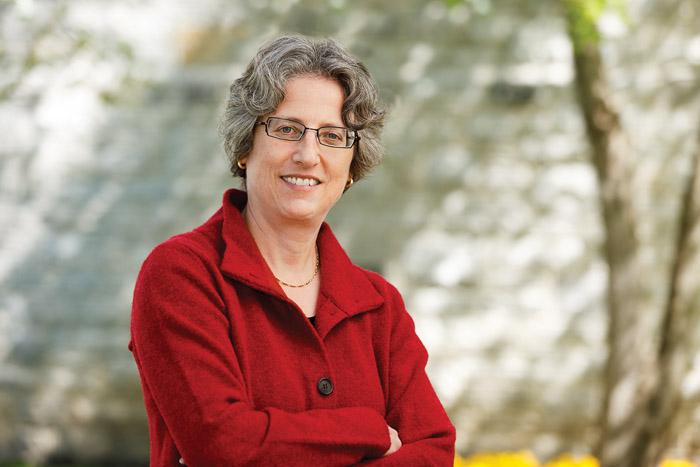Asking the Right Questions

Nancy A. Roseman
I spend a fair amount of time on the road these days, getting to know Dickinson through the perspectives and experiences of our alumni and parents of current students. It is also an opportunity for me to help them see and understand what Dickinson is today, which can be much different from how they experienced it.
Some things, however, do remain the same, including the many phrases that encapsulate Dickinson’s philosophy and history. These are constants among our community, and we are rightly proud of them. I believe the one that captures our spirit — and certainly captivated me from the moment I read it — was the call more than 200 years ago to cultivate engaged citizens for society. It was a call to nurture the American experiment via a liberal, and useful, education.
Many of these conversations take place in offices and conference rooms in cities across America. In this way, I get windows into why these extraordinarily successful and extremely busy individuals take time out of their day to talk with me and learn more about Dickinson. They are intensely interested in the present and future direction of their college. They care deeply about the state of higher education, and not necessarily only about Dickinson.
There are a few recurring questions I hear: What do you think about online learning? How do you get people to understand the value of a liberal-arts education? What is your highest priority? What are you going to do about the cost question?
In my view, these seemingly disparate questions all have the same root, although the answer to each has a slightly different flavor.
First and foremost, our pedagogical approach is to provide a liberal-arts education that is an intensely social enterprise. I am deeply proud of our average class size of 17, with no class larger than 50. You should be too. Without the intimacy that can come from focused teachers stretching and challenging their students, our students could not take those necessary intellectual and personal leaps. Can a computer tell you that you did a good job? Tell you that you failed, but do so in a way that inspires you to work harder? Demand more of you than you ever imagined giving? Take you to lunch?
What we do at a residential liberal-arts college is about people. It is a very human endeavor — helping young people become more fully themselves, more fully engaged, and instilling in them a sense of what it is to be a citizen of the world and a Dickinsonian. This is at the very core of a residential liberal-arts experience. This is an incubator in which you discover yourself and build the base on which you stand for the rest of your adult life.
Cost? Sixty percent of our annual budget is the human cost of that social enterprise: salaries and benefits. The second largest bite out of our budget is, no surprise, financial aid — the other side of this human equation. The college commits more than $40 million a year to financial aid, of which 10 percent is funded through endowed scholarships. Think about your Dickinson experience. Was there any way to make it more efficient and not lose the thing that gave it the most power — the people who surrounded you?
My highest priority? That’s an easy one — maintaining our pedagogical model and having the resources so that it can continue to evolve and remain available to students across the socioeconomic spectrum.
These are the things I often talk about in conference rooms and private offices all over this country. But perhaps the most important question is one I pose: How can you and other committed Dickinsonians help the college remain true to its mission — the social enterprise it was meant to be?
I look forward to many more of these conversations.
Read more from the winter 2014 issue of Dickinson Magazine.
Published January 15, 2014